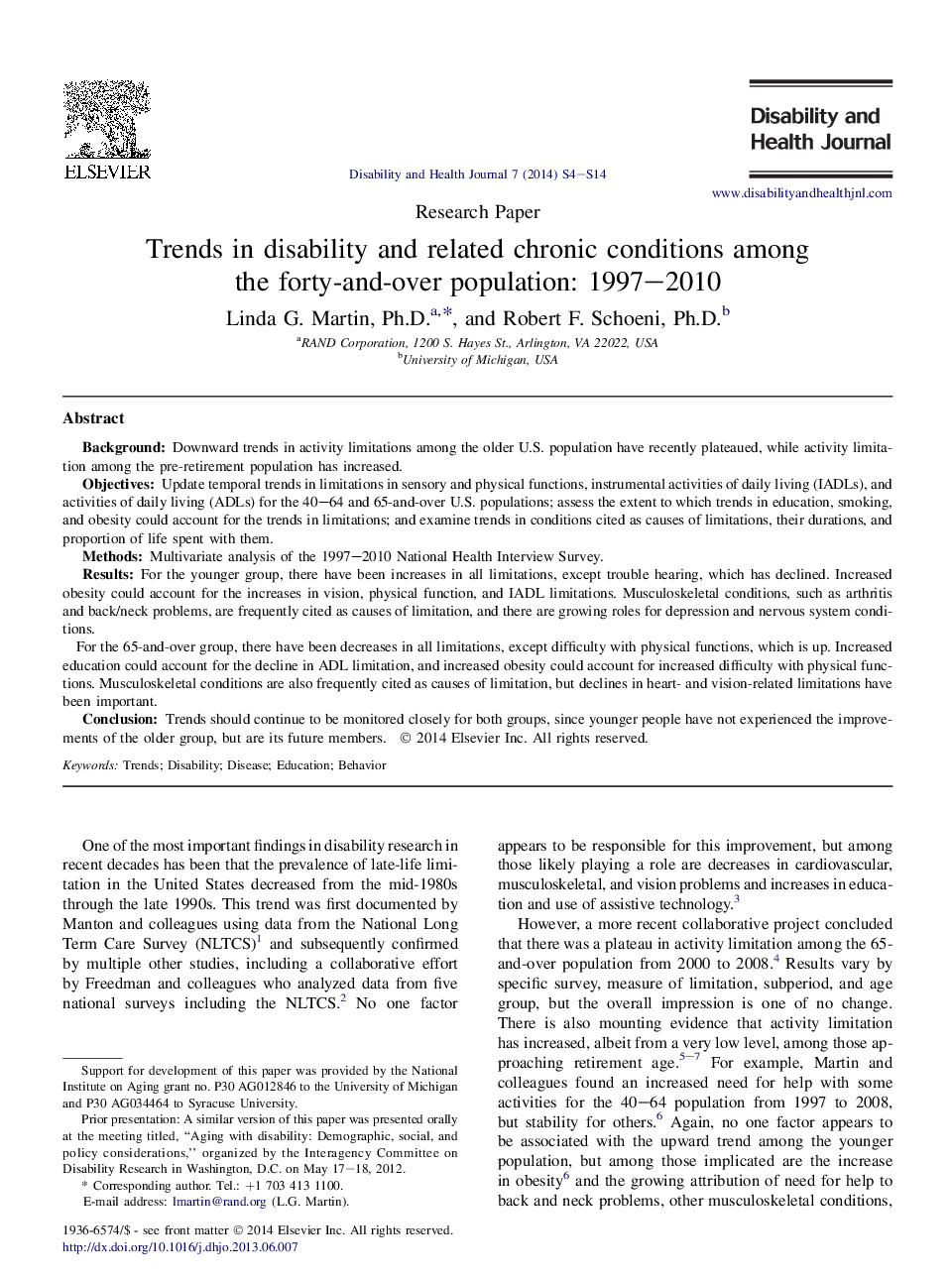| Article ID | Journal | Published Year | Pages | File Type |
|---|---|---|---|---|
| 4197375 | Disability and Health Journal | 2014 | 11 Pages |
BackgroundDownward trends in activity limitations among the older U.S. population have recently plateaued, while activity limitation among the pre-retirement population has increased.ObjectivesUpdate temporal trends in limitations in sensory and physical functions, instrumental activities of daily living (IADLs), and activities of daily living (ADLs) for the 40–64 and 65-and-over U.S. populations; assess the extent to which trends in education, smoking, and obesity could account for the trends in limitations; and examine trends in conditions cited as causes of limitations, their durations, and proportion of life spent with them.MethodsMultivariate analysis of the 1997–2010 National Health Interview Survey.ResultsFor the younger group, there have been increases in all limitations, except trouble hearing, which has declined. Increased obesity could account for the increases in vision, physical function, and IADL limitations. Musculoskeletal conditions, such as arthritis and back/neck problems, are frequently cited as causes of limitation, and there are growing roles for depression and nervous system conditions.For the 65-and-over group, there have been decreases in all limitations, except difficulty with physical functions, which is up. Increased education could account for the decline in ADL limitation, and increased obesity could account for increased difficulty with physical functions. Musculoskeletal conditions are also frequently cited as causes of limitation, but declines in heart- and vision-related limitations have been important.ConclusionTrends should continue to be monitored closely for both groups, since younger people have not experienced the improvements of the older group, but are its future members.
